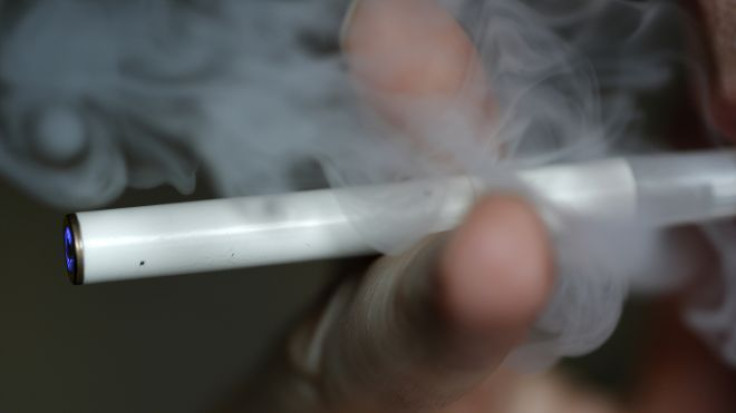E-Cigarettes As Effective As Nicotine Patches In Helping Smokers Quit: Study

E-cigarettes were just about as effective as nicotine patches in helping smokers quit in the first trial to compare the two products, though scientists caution that more research is needed to study the long-term effects of such products.
An e-cigarette is a cylinder with a battery-operated heating element that turns a special liquid mixture – usually containing nicotine, but not always – into vapor. It is still unclear whether e-cigarettes are safer than conventional tobacco products. But even so, some health officials think that e-cigarettes could be a helpful tool for those looking to kick the habit.
For a new study published in The Lancet [PDF], researchers recruited 657 adult smokers in New Zealand who were looking to quit smoking. From one week before their designated quit day to 12 weeks after, participants were given one of the following: e-cigarettes, nicotine patches, or a placebo e-cigarette with no nicotine.
When the researchers followed up with the participants six months later, 7.3 percent of the 289 people in the nicotine e-cigarette group were still successfully abstaining from conventional tobacco products; in the patches group, that figure was 5.8 percent; and in the placebo e-cigarettes group, just 4.1 percent of smokers successfully quit.
Peter Hajek, a tobacco researcher at Queen Mary University of London, called the study “pioneering” in a commentary [PDF]published in same issue of The Lancet.
“Stop-smoking services which distribute nicotine replacement therapy with minimum support now have a cheaper alternative to consider, and health professionals will now hopefully feel easier about recommending e-cigarettes to smokers, or at least condoning their use,” Hajek wrote.
Lead author Chris Bullen, the director of the University of Auckland’s National Institute for Health Innovation, says the study establishes a critical benchmark for comparing e-cigarettes and nicotine patches.
"But there is still so much that is unknown about the effectiveness and long-term effects of e-cigarettes,” Bullen said in a statement. “Given the increasing popularity of these devices in many countries, and the accompanying regulatory uncertainty and inconsistency, larger, longer-term trials are urgently needed to establish whether these devices might be able to fulfill their potential as effective and popular smoking-cessation aids."
Just how toxic e-cigarettes are is still unclear. In 2009, the U.S. Food and Drug Administration found traces of carcinogenic chemicals such as tobacco-specific nitrosamines (TSNAs) and diethylene glycol, a chemical used in antifreeze, in e-cigarettes.
But in a 2011 paper in the Journal of Public Health Policy, two researchers reviewed the data and found the amount of TSNAs in e-cigarettes is a tiny fraction of the amount found in regular cigarettes – anywhere from a 500-fold to a 1400-fold decrease. And while the FDA did find diethylene glycol in e-cigarettes, 15 other studies failed to find the chemical, the authors wrote.
Commercial e-cigarettes are not currently regulated by the U.S. Food and Drug Administration. In many U.S. states there are no restrictions on selling the devices to minors. And e-cigarette use among middle and high school students doubled during the period of 2011-2012, according to the U.S. Centers for Disease Control’s latest Morbidity and Mortality Weekly Report. While adult smokers might find e-cigarettes a useful tool for quitting, some health officials worry that, with teenagers, we might see the opposite effect; e-cigarettes could be a gateway to nicotine addiction and smoking regular cigarettes.
“Given the rapid increase in use and youths' susceptibility to social and environmental influences to use tobacco, developing strategies to prevent marketing, sales, and use of e-cigarettes among youths is critical,” the CDC wrote.
SOURCE: Bullen et al. “Electronic cigarettes for smoking cessation: a randomized controlled trial.” Lancet published online 8 September 2013.
© Copyright IBTimes 2024. All rights reserved.











